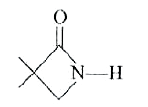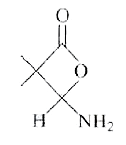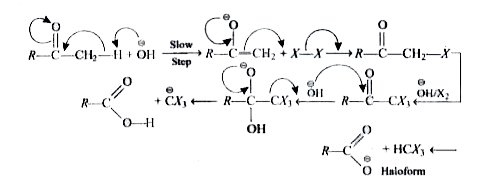Of the following reactions, how many reaction, are used for the preparation of amines?
R−O∣∣C−CH3+H3C−NO2NaOH−−−→
The correct Answer is:5
To determine how many reactions from the given scenario are used for the preparation of amines, we will analyze the reaction step by step.
Step 1: Identify the Reactants
The reactants in the reaction are:
- A ketone (R - C(=O) - CH₃)
- A nitroalkane (H₃C - NO₂)
Step 2: Understand the Reaction Conditions
The reaction is carried out in the presence of a base, specifically sodium hydroxide (NaOH). This suggests that the reaction may involve nucleophilic attack and subsequent transformations.
Step 3: Recognize the Type of Reaction
This reaction is an example of the Henry reaction, which typically involves the reaction of a nitroalkane with a carbonyl compound (like a ketone) in the presence of a base to form a beta-nitro alcohol.
Step 4: Formation of Beta-Nitro Alcohol
In the presence of NaOH, the nitroalkane reacts with the ketone to form a beta-nitro alcohol. This step does not yield an amine directly, but it is a precursor to further reactions.
Step 5: Possible Further Reactions
The beta-nitro alcohol can undergo:
- Dehydration to form a nitroalkene
- Reduction to form a beta-amino alcohol
However, the question specifically asks about the formation of amines.
Step 6: Conclusion on Amines Formation
While the beta-nitro alcohol can be reduced to form a beta-amino alcohol, the question asks if the initial reaction leads to the formation of amines. The reaction does not directly yield an amine; therefore, it cannot be counted as a method for preparing amines.
Final Answer
Based on the analysis, 0 reactions from the given scenario are used for the preparation of amines.
---
The reactants in the reaction are:
- A ketone (R - C(=O) - CH₃)
- A nitroalkane (H₃C - NO₂)
The reaction is carried out in the presence of a base, specifically sodium hydroxide (NaOH). This suggests that the reaction may involve nucleophilic attack and subsequent transformations.
This reaction is an example of the Henry reaction, which typically involves the reaction of a nitroalkane with a carbonyl compound (like a ketone) in the presence of a base to form a beta-nitro alcohol.
In the presence of NaOH, the nitroalkane reacts with the ketone to form a beta-nitro alcohol. This step does not yield an amine directly, but it is a precursor to further reactions.
The beta-nitro alcohol can undergo:
- Dehydration to form a nitroalkene
- Reduction to form a beta-amino alcohol
While the beta-nitro alcohol can be reduced to form a beta-amino alcohol, the question asks if the initial reaction leads to the formation of amines. The reaction does not directly yield an amine; therefore, it cannot be counted as a method for preparing amines.
Based on the analysis, 0 reactions from the given scenario are used for the preparation of amines.
Similar Questions
Knowledge Check
Consider the following sequence of reactions :
HO−O∣∣C−CH3∣C∣CH3−C≡N200∘C−−−→ALiAIH4−−−−−−→H2OB, (B) isA B
B CHO−H2C−CH3∣C∣CH3−CH2−NH2D
CHO−H2C−CH3∣C∣CH3−CH2−NH2D
Compound having −O∣∣C−CH3 group reacts rapidly with halogen in presence of a base to form haloform. The reaction is known as haloform.
R−O∣∣C−CH3X2+ϴOH−−−−→R−O∣∣C−ϴO+CHX3
Mechanism

Consider the following reactions:
Reaction I →Ph−O∣∣C−CH3Cl2,ϴOH−−−−→Ph−O∣∣C−ϴO+CHCl3
Reaction II →Ph−O∣∣C−CD3−Cl2,ϴOH−−−−→Ph−O∣∣C−ϴO+CDCl3
Which of the following is correct comparison of the rate of reaction I and II?ArI>rIIBrI>rIICrI=rIIDCannot be determinedCompound having −O∣∣C−CH3 group reacts rapidly with halogen in presence of a base to form haloform. The reaction is known as haloform.
R−O∣∣C−CH3X2+ϴOH−−−−→R−O∣∣C−ϴO+CHX3
Mechanism

Which of the following will yield iodoform on reaction with I2+NaOH?A B
B C
C D
D
Of the following reactions, how many reaction, are used for the preparation of amines?
R−C≡NLiAlH4−−−→
View SolutionOf the following reactions, how many reaction, are used for the preparation of amines?
R−CH2−NO2H2,Ni−−−→
View SolutionIn the following reaction, trace the position of isotopic O18
CH3−O∣∣C−O−H+CH3CH2−18O−H⇔CH3−O∣∣C−O−CH2CH3
+H2O
View SolutionIn the given reaction
CH3−Br∣CH−CH2−COOHNaOH−−−→(X).
'X' will be
View SolutionArrange the following compounds in decreasing order of nucleophilic addition reaction
H−O∣∣CI−H H3C−O∣∣CII−H H3C−O∣∣CIII−CH3

View Solution
